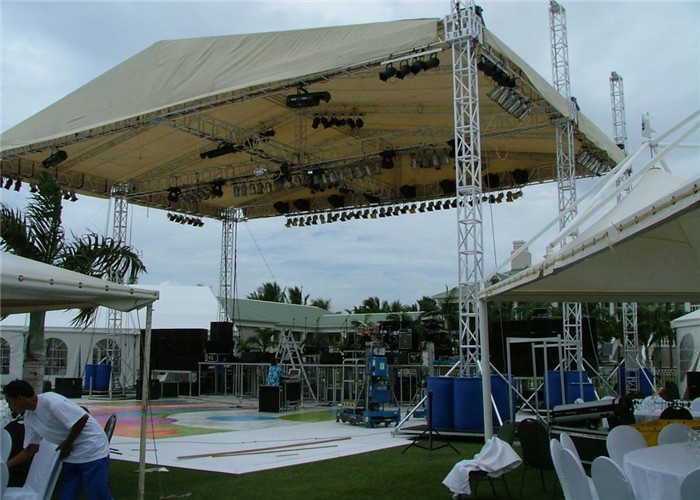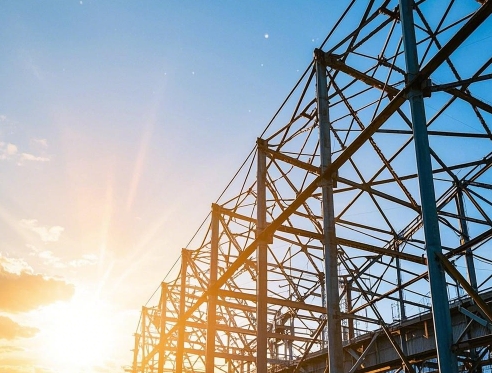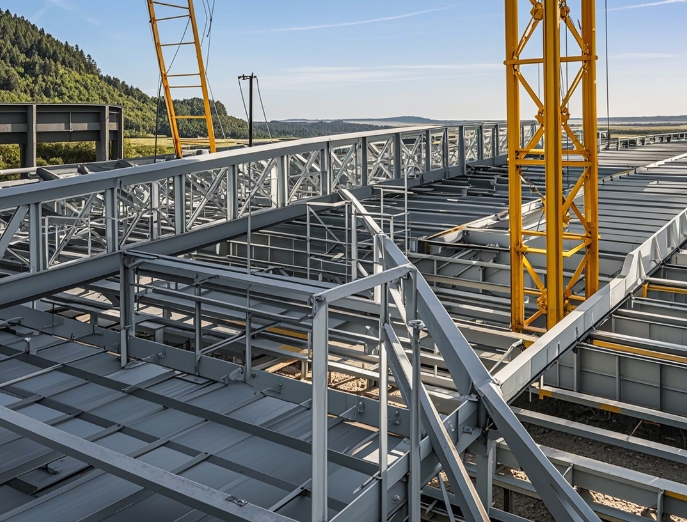Selection of grid structure
更新时间:2021-01-22 09:19:04•点击:66160 • Industry Views

There are many factors that affect the selection of grids, and the most fundamental is to start from customer needs, but as a customer, you must also have a certain understanding of grid engineering, such as grid production, installation methods, steel indicators, span size, Rigidity requirements, plane shape, supporting conditions, etc. all affect the determination of which grid form to use to a certain extent.
1. If the nodes are welded, a grid composed of a plane truss system is more convenient to fabricate than a grid composed of quadrangular pyramids; a two-way orthogonal grid is more convenient than a two-way diagonal grid and a three-way grid ; The quadrangular pyramid grid is more convenient than the triangular pyramid grid.2. The installation method does not adopt overall lifting or hoisting, but adopts striped or divided installation, or adopts high-altitude sliding method, choose two-way orthogonal right-laying grid, right-laying quadrangular pyramid grid, and positive-discharging evacuated quadrangular pyramid grid Three types of orthogonal ortho-placed grids are more advantageous than diagonal grids.
3. The steel index is an important indicator for measuring grid selection.
4. Calculations show that the size of the span has little effect on the selection of the grid. However, large-span grids are generally important buildings. At present, two-way orthogonal orthographic grids, two-way orthogonal diagonal grids, and three-way grids are commonly used in my country. The grid structure is composed. Because these types of large-span grids have rich experience in design and construction, and relatively skilled in technology. Three-way grid, triangular cone grid, hexagonal cone grid, the general structure is more complicated, and the amount of steel used is large, so it should be less used in small and medium spans.
5. The rigidity of the grid is much better than that of the flat roof truss, but the difference between the various grids, whether it is horizontal stiffness or vertical stiffness, is not small. For example, the quadrangular pyramid grid is placed obliquely, which is geometrically variable, and its geometric invariance can only be ensured when edge members or strong ring beams are added. Generally speaking, grids with a large number of nodes and rods, such as triangular cone grids, hexagonal cone grids, three-way grids, and quadrangular pyramid grids, have greater rigidity; on the contrary, such as diagonally placed quadrangular pyramids Grids, checkerboard-shaped quadrangular pyramid grids, evacuated triangular pyramid grids i and ii, honeycomb triangular pyramid grids have fewer nodes and rods, and their stiffness is also smaller.
6. The plane shape is a circle, a regular hexagon and a polygonal grid that is close to a circle. From the perspective of the layout and architectural modeling, it is more suitable to use three-way grids, hexagonal cone grids, triangular cone grids, and evacuated triangular grids. Frame i, ii type and honeycomb triangular pyramid grid. Especially when the plane shape is a regular hexagon, the grids of these types of grids are regular, with fewer types of rods, and construction is convenient; if other types of grids are used, the grids near the boundary are irregular and relatively messy. Increased and inconvenient construction.
7. For multi-point support grids, it is more appropriate to use orthogonal orthographic grids. In the case of multi-point support, the force-bearing performance of this type of orthogonal orthographic grid is more reasonable than that of the diagonally placed grid, and the deflection is also smaller. The calculation of the four-point support grid shows that under the same conditions, the maximum internal force ratio of the two-way orthogonal orthographic grid and the two-directional orthogonal diagonal grid is about 5/7, and the deflection ratio is about 6/7, and the obliquely placed net frame needs to add edge-sealing edge rods at the free boundary, which increases the number of rods and the amount of materials. For grids with three sides supporting and one opening, orthogonal orthographic grids should also be used. For the grid frame that combines peripheral support and multi-point support, it can be used as an orthogonal vertical grid or an inclined grid, but generally it is not suitable to use a three-way grid and a triangular cone and a hexagonal cone. Net frame.
8. For floors of multi-storey buildings with a span of no more than 40m and roofs with a span of no more than 60m, a combined grid can be used in which reinforced clay concrete slabs are used instead of steel winding; the combined grid should be a quadrangular pyramid combined grid Positive discharge and evacuated quadrangular pyramid combined grid, two-direction orthogonal positive combined grid, diagonally placed quadrangular pyramid combined grid and honeycomb triangular pyramid combined grid.
Recommended Reading
-
Full analysis of seismic design and maintenance of grid structure
2025-02-27 16:16:52•625312 次
-
What are the key process points to follow in order to ensure the quality of grid processing?
2025-02-27 11:21:00•103984 次
-
What type of construction is the grid mainly suitable for?
2025-02-25 16:42:00•102300 次
-
Quality control requirements of grid manufacturers!
2025-02-25 16:02:44•191513 次






